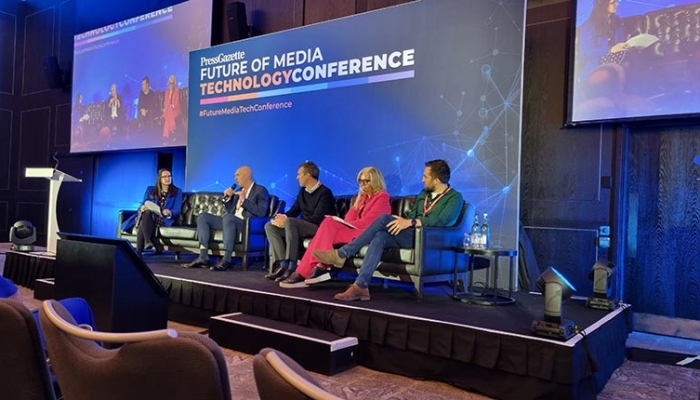How newsrooms are changing and what this means for the PR industry
Newsrooms are always looking for ways to improve their processes, and the PR industry needs to keep up as they evolve. Press Gazette’s Future of Media Technology Conference featured a panel discussion dedicated to exactly that – newsroom transformation.
Here are insights shared by David Dinsmore, COO of News UK, Graham Page, sector lead for media, tech, telco & sports at Q5 Partners, Paul Rowland, editorial director at Reach plc and Nina Wright, chair of Harmsworth Media and the Professional Publishers Association…
AI’s impact on the newsroom
While AI might still be in its infancy, it’s already having an impact on the newsroom. Paul Rowland spoke about how Reach plc have been using Guten:
‘It’s a rewriting tool which makes a piece of content written in house, and reversions it for another title in that style of that publication, therefore eliminating the need for journalists to do things which aren’t distinct to their particular beat or their particular patch.’
Other publishers also mentioned different tools they are using to make the more mundane parts of a journalist’s job quicker. But David Dinsmore stressed the important role of humans for research – ‘The journalist is still going to go and dig up the proper stories, and that’s the stuff that the customers are interested in.’
The impact on PRs: Remember early predictions that AI could one day be turning your press releases into articles? Should this come to pass, journalists will have more time to dedicate to writing in-depth articles. Getting these stories will continue to require a lot of research, and the media will be reliant on expert opinion and case studies to give news and features colour and credibility. PRs – get your clients ready to be featured regularly, and in more detail.
The importance of brand
PRs and publishers both have this in common – the importance of brand and brand reputation. The problem for a lot of publishers in the current climate is that younger audiences, especially Gen Z, don’t recognise news brands. As Graham Page explained:
‘When people come across your content, they don’t recognise who it is and whether it should be trusted or not. We run a youth panel – when we talk to people, around 16 to 18, their knowledge of news industry brands is very light.’
Newsrooms are adapting to make sure that their brand is standing out. Nina Wright shared that ‘Brands need to be alive and sing on a whole number of different platforms, and your revenues need to do that as well.’
She gave the example of the New Scientist which, as well as having several revenue streams and being on all the social media platforms, also has an extensive live event programme. This helps to further its connection with communities and make the brand more memorable.
The impact on PRs: Publishers could well be shifting from their traditional platforms and PRs must be ready for these industry changes. News organisations won’t be interested in pitches that don’t align with their current branding. Make sure that you understand their brand, and that your own brand is also trusted and reputable. With publishers also more likely to be getting on the newer platforms, such as TikTok, make sure the content you are suggesting can work on a myriad of mediums.
Platform changes affecting publishers
Google’s algorithm changes have been impacting publishers, as we highlighted in this round-up of the conference on our sister ResponseSource blog. Nina said that many publishers are currently ‘at the mercy of the platforms’ as ‘you never know when they are going to change their algorithms, and then you have to scramble around and react and respond to that.’
Newsrooms have had to be even more savvy to make sure that their content is performing well on search and that the right audience is reading it. This is a particular challenge for smaller newsrooms. Paul spoke about Reach plc’s CornwallLive, which aims to be ‘a local, trusted, relevant news source in Cornwall, but also wants to thrive and scale.’ With a story about a new bypass, the team there were able to use the platforms to their advantage. As Paul explained:
‘The Google Discover algorithm knows that lots of people have an interest in Cornwall, and if they optimise that through headlining it in a clever way, then it can reach a huge audience, beyond the core audience of loyal Cornwall users it wants to get to.’
Impact on PRs: While Paul was able to recount a positive story for Reach plc, a lot of publishers are struggling due to Google’s changes. As PRs, stay on top of what changes the platforms are making – algorithms are no longer the same. Be aware of what is going to perform well on Google, and where SEO can be optimised – journalists will be more likely to want to work with you.
For more on the ins and outs of the publishing industry, and how you can work with journalists, broadcasters, and influencers to gain coverage in the media, check out the Vuelio white paper ‘From pitching to getting published: A PR’s guide to media relations‘.


Leave a Comment